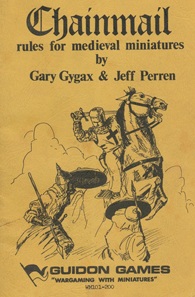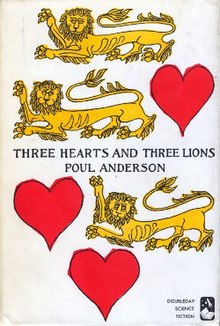1 Inception
The Dungeons and Dragons franchise started indirectly, with a miniature wargame by the name of Chainmail in 1971. This was Dungeons and Dragons’ spiritual successor, as it included many fantasy elements such as elves, orcs, and dragons – and most importantly, a ruleset created in part by the man himself, Gary Gygax. It was he who expanded the ruleset from four pages into the full version (Appelcline 2014), and that penchant for intricate rulesets and fantasy elements set the stage for the first edition of Dungeons and Dragons in 1974.
The original cover of Chainmail.

The game, while original, drew heavily from many preexisting works of literature. Here’s a list:
THE SETTING – Most obviously, the presence of elves, orcs, halfings (called hobbits before a copyright dispute,) and other fantasy elements were drawn from J.R.R. Tolkien’s legendary series Lord of the Rings, though other less known elements were present.
The greatest fantasy epic ever made – The Lord of the Rings.

THE MAGIC – The magic system, where wizards memorized their spells and forgot them after casting, was based on the magic system in the works of Jack Vance, or what would later be called Vancian spellcasting.
Jack Vance’s fantasy saga, and an unwitting shaper of the way magic mechanics were developed in TTRPGs ever since.

THE ALIGNMENTS – Even the classic Good/Evil – Lawful/Chaotic alignment chart was taken from Three Hearts and Three Lions, a novel by Poul Anderson. However, given its popularity today, these elements are often misunderstood as originating from Dungeons and Dragons itself.
Three Hearts and Three Lions, an insane story of a Danish nuclear scientist becoming Law itself.

